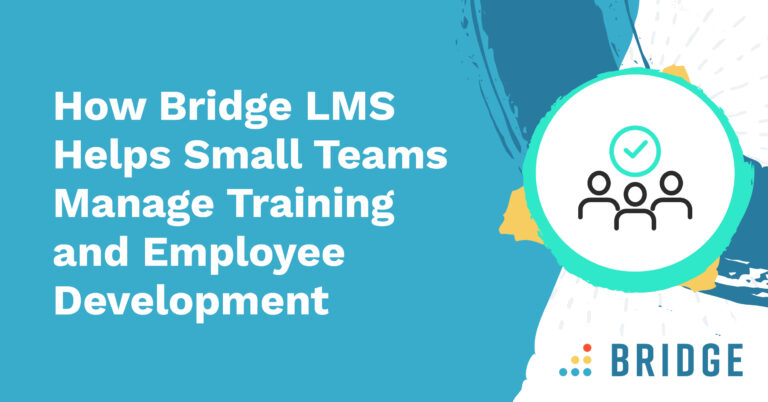It was a summer day in 2010, I’m sitting at a conference table in Houston at a client meeting. On a break, I check my phone for messages. There is a text for me to call the office as soon as possible. One of the people on my team has left his ID badge on his desk and walked out.
Brandon has left the building, not his real name, and since no one can get back in the door without an ID badge, Brandon is not coming back.
I’m shocked by the news that Brandon has left in such an abrupt manner, except…not really.
For nearly 20 years, I worked as a manager of people. I worked at a big corporation. I built very engaged teams. Some of the most committed teams, in fact, which that company of 60,000 employees has ever seen. The last review of my employee engagement results with my boss produced the phrase “we never see results like this.” That still rings with pride in my ears. But the survey doesn’t tell the whole story.
No survey ever tells the whole story. There was other evidence that I had highly engaged teams. People tended to gravitate to my teams. They wanted to be on my team. Don’t get me wrong, it wasn’t about me. At least not directly. I do have the ability to hire right and put together groups of people who will work well together in an environment of mutual respect and trust. I also have a talent to help people reach their potential. Again, this doesn’t tell the whole story. There’s an ugly side of the story too.
The whole story can’t be told without Brandon’s story, the guy who left his badge on the desk and walked out, never to return. Yeah, that’s the rest of the story.
When you think about every employee who has quit your team or organization, one thing is common to all of them, before they quit, they quit.
What I mean is, long before the employee gives their notice to terminate, there is a reduction in effort, a diminishing of results, a general disengagement. It has to be this way. That’s a normal human response. Even in the extremely rare case where “a job finds the employee” at some point, they disengage from the one they’re doing as they anticipate newer, greener, more open pastures.
That was the case with Brandon too. So when I said I was shocked by the news, the shock only lasted about one minute because I’d been traveling the road of Brandon’s disengagement for a few months.
Brandon was in over his head. I can tell myself he probably wasn’t a good fit for the job, but it’s deeper than that. I wasn’t meeting his needs. I think I could have done more. Now I understand sometimes people take jobs they are ill-suited for, and no matter how much training and mentoring they get, they made a wrong choice. Brandon came highly recommended from another area of the company. But as I would find out later, he’d been struggling for a long time. Whatever the case, Brandon was disengaged. He had given up, he was doing the minimum to look busy until he could make his break. Before he quit, he quit.
Employee disengagement is rooted in many things, and we like to play the blame game as managers because we don’t want to think that we ever fail. The truth is, we fail a lot. We all do, it’s part of being human, and managers are human.
So, even me, the guy who built some of the most engaged teams, failed to engage everyone. Brandon is a prime example, but there were others. Sure, I can come up with excuses that these employees were a bad fit, that they didn’t have the skill or the determination. But all that is beside the point, because what the studies of employee engagement tell us, and rightly so, is that as much as 70% of the variance in employee engagement is attributable to the employees’ direct manager.
Most managers don’t know what engagement is. That’s because most organizations don’t understand what engagement is. We hear of work cultures that provide free soda, ping pong tables, and work-from-home days all in the name of employee engagement. Don’t get me wrong, I like all of those things…well, maybe not work-from-home days, but they are not employee engagement initiatives.
70% of the variance in employee engagement is on the manager. Before employees quit, they quit. They quit when they become disengaged. Even if they are going through the motions, they lack productivity, energy, attention to detail, and alertness. That’s why when you focus on employee engagement, productivity, profitability, client satisfaction, safety, and quality are positively impacted.
So What Can You Do?
Stop dividing your time inappropriately.
One of the main impediments to managers engaging employees is time. Managers divide their time inappropriately and disproportionately in favor of projects and initiatives while time coaching their employees takes a distant back seat. I mean way back like the back seat of one of those extra-long, bend-in-the-middle slinky buses. I once posed a question in the Harvard Review group on LinkedIn. I asked managers, “What proportion of your time do you spend on projects and initiatives versus coaching your team. Responses varied a little from 90/10 to 60/40, all in favor of projects and initiatives. The most common response was 80/20, again, in support of projects and initiatives.
If you’re a manager, you’re thinking, “Yeah, that’s about right, but what’s wrong with that?” What’s wrong with it is it’s backward. You should be coaching your team 80% of the time and working projects and initiatives 20% of the time. Now, you think I’m crazy, but hear me out. You have a team of people. And THEY should be spending time working those projects and initiatives. You don’t have to be the doer. You just need to ensure those projects and initiatives get done. “But,” you say, “they all have their day jobs, the things that are core to the business to accomplish, they can’t possibly do more.” They can do more, they want to do more. What’s more, I met a leader from a big company last week, and they’re doing it. But that’s a story for another day.
Go have a heart to heart with YOUR boss about some of those initiatives. I’m not saying, make demands, and refuse to do projects that don’t fit your core mission. I’m saying, have the conversation so that your boss can either help you understand how they are core to the mission, or that through the conversation, your boss will see that those initiatives are just busywork. That’s part of your job. Stop saluting and taking on more, because there will always be more work than you can do, so start communicating. You’ll find you’re more engaged too.
Discover your employees’ talents and put them to use every day.
It’s easy to find out the talents of each of your team members. If you’re unsure how to do it, reach out to me, I can give you some simple steps to DIY it. Everyone should LOVE Monday just like Friday but for a different reason. I can help you get you and your team there – I promise.
Before employees quit, they quit. 70% of resolving this is on you, their direct manager. Are you ready to take on the responsibility of that 70%, or are you going to go on letting your people hate getting up in the morning? Because 70% of U.S. workers hate getting up in the morning. That’s the proportion of the U.S. workforce that is not engaged. Worldwide, it’s 87%.
Before they quit, they quit.
Join Ryan Houmand, Bridge Employee Development Consultant & Trainer, at our next Bridge Academy for Managers. These webinar trainings will share industry standards and best practices for a manager’s role, specific to one-on-one meetings, career drivers, skill feedback, and goal setting.



